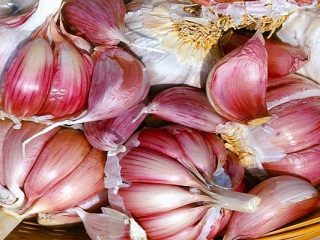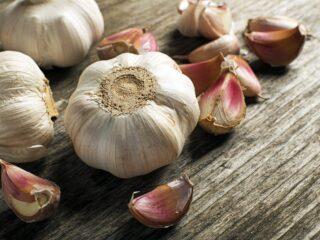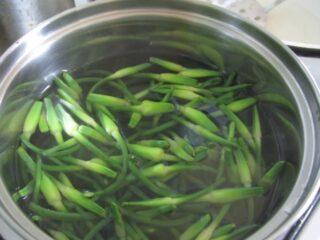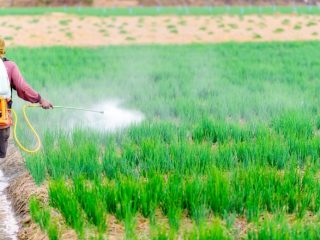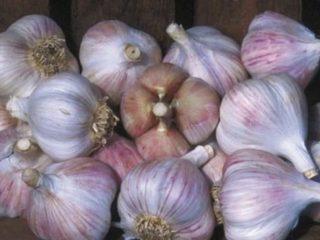Content
Garlic is a vegetable crop rich in thioesters and allicin. The components give the onion a spicy-bitter taste with a pungent undertone. But, despite the fact that the plant contains burning substances, gardeners are unpleasantly surprised to find parasites in the juicy pulp. Red worms in garlic spoil the plantings and, burrowing into the head, turn it into dust.
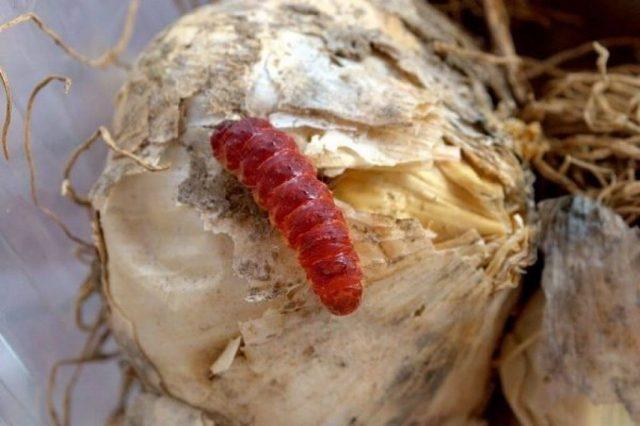
There is a large group of insects for which garlic is their main food.
Why do worms appear in garlic?
Agricultural technicians are confident that colonies of red worms and other insects attack cultivated plants due to non-compliance with crop rotation conditions and improper care of plantings. Another factor that has a negative impact on the condition of vegetable beds is unfavorable temperatures and high levels of air humidity.
Infection and insemination of plantings by insects can also occur due to the use of contaminated garden tools. Shovels, rakes, and loosening devices transfer fungal spores, pathogenic bacteria and larvae of arthropod pests from damaged plants to healthy ones.Garlic worms and other types of insects infect plantings at different stages of the growing season or during storage.
What kind of worms eat garlic?
Worms and other arthropod pests not only destroy plant tissue, but are also carriers of diseases. Fighting infections requires significant time and material costs. In this regard, experienced gardeners try to rid plantings of red worms immediately after they are discovered. The effectiveness of measures depends on how correctly the onion parasite is identified and adequate methods of influencing it are selected.
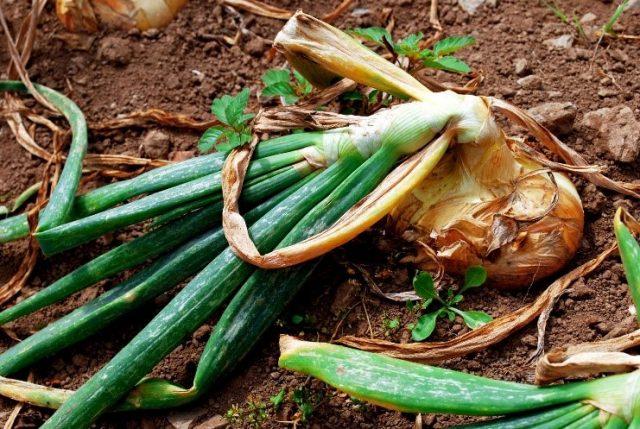
Garlic and onion plantings have many common insect enemies
Onion sharpener
Harmless-looking gray-white moths are dangerous pests. Female onion borers lay many eggs on garlic plantings. The emerging pink-red thick caterpillars devour the pulp of the cloves, causing the bulbs to rot and dry out.
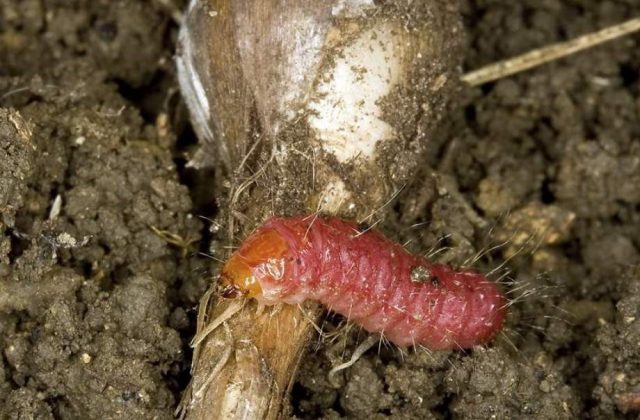
A head of garlic can simultaneously contain up to 30 onion borer caterpillars.
Tobacco thrips
Small brown or yellowish insects literally suck out plant juices. A few days after the female pest lays eggs, voracious larvae appear. Garlic stops growing and weakens, the heads do not form, and the crop may die completely.
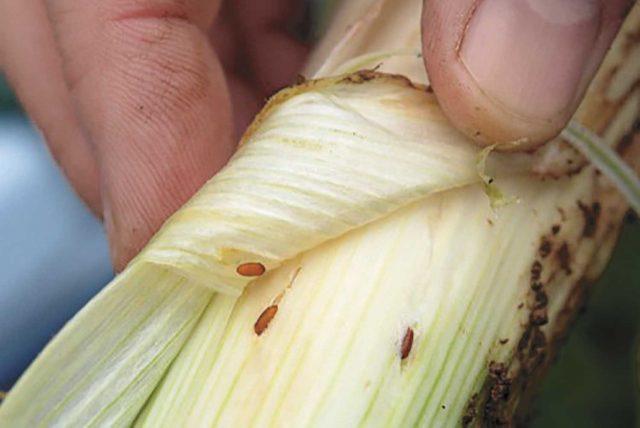
Thrips survive the winter under covering scales; the heads affected by the parasite rot
Onion fly
The onion fly, a fairly large pest, is gray in color. White insect larvae appear in late spring.The location of the parasites is the base of the rosette of leaves or the soil near the head. As a result of exposure to the larvae, the bulbs soften and rot.
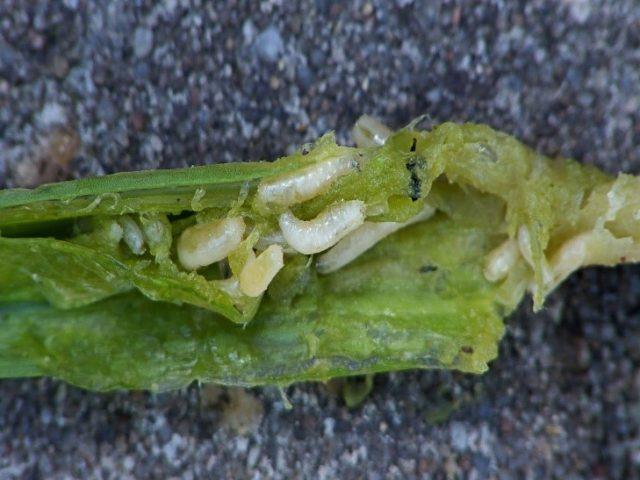
The onion fly is the most dangerous pest of garlic, widespread everywhere.
Stem garlic nematode
The feathers of garden crops turn yellow and die when attacked by a stem nematode. Having discovered a wormy garlic root, you can examine small parasites on it. Subsequently, the heads become loose and rot.
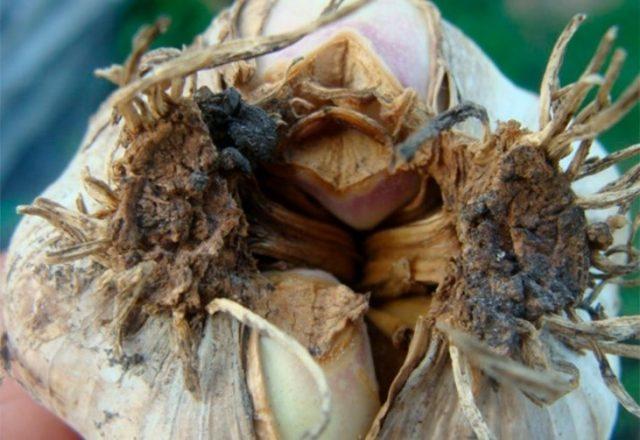
Nematode is a thin, small, whitish worm that feeds on plant sap.
Onion moth
Onion moth caterpillars are dangerous for garlic plantings. Yellow-green creatures with brown warts settle right on the arrows. Light spots form on damaged leaves of the plant. Ultimately, the garlic feathers turn yellow and dry out, and disruption of the photosynthesis process leads to the fact that the heads do not develop and remain small.
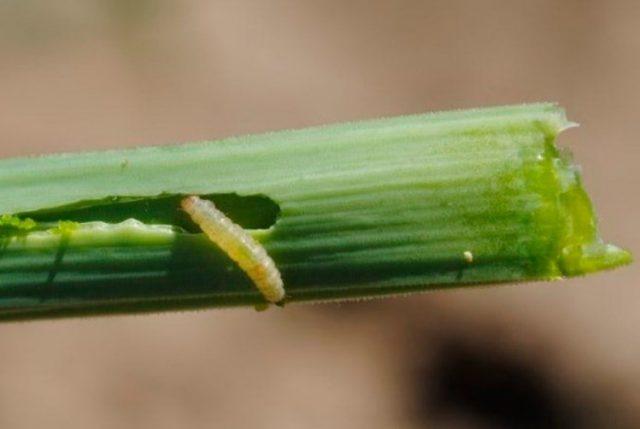
Light spots and stripes on garlic shoots are the result of the activity of onion moth caterpillars
Hoverfly
A wasp-like insect lays eggs in the axils of plant leaves. The dirty yellow larvae, which look like thick worms, hatch and damage the garlic heads. Fungal or bacterial flora develops in the affected bulbs. Over the summer, two generations of the pest appear.

In addition to garlic, hoverfly larvae often infect garden flowers.
What to do if there are worms in garlic
If parasites are detected on a garden crop, it is necessary to take measures to destroy the insects and their larvae. Folk remedies and substances produced by the chemical industry will help get rid of worms in garlic.
Chemicals
If a worm eats garlic, it is better to treat the beds with chemicals. Agrotechnicians recommend using insecticidal substances in cases where more than 10% of the plantings are affected. Specialty stores offer a variety of products to combat red worms. Universal insecticides are used for spraying vegetable beds: Tagore, Malathion, Aktara, Calypso.
You can also get rid of garlic nematode using insecticidal substances. The following drugs are effective in the fight against threadworms: Fitoverm and Akarin.
At the initial stage of infection, garlic plantings can be treated with a pale pink solution of potassium permanganate. After harvesting, the soil is irrigated from worms with formaldehyde or hydrogen peroxide. The concentration of the solution is 1:25 (two tablespoons of the substance per bucket of water).
Folk remedies
Often, gardeners in the fight against red worms and other insects use means that have been proven by centuries of experience. Owners of individual farms and farmers producing environmentally friendly products prefer to use substances based on folk recipes.
Among the popular remedies against red worms and larvae:
- Tobacco dust with wood ash, taken in equal proportions. The mixture is seasoned with ground pepper (red or black), and the plantings are treated.
- An infusion of celandine or wormwood, prepared from plants steamed with hot water.The product is infused for two days, filtered and used to spray the beds.
- It is recommended to water the garlic plants for the first time with salt water in early June. Repeated treatment for worms is carried out after two weeks. To prepare the working solution, a glass of table salt is diluted in a bucket of water.
- Garlic damaged by onion grinder must be treated with crushed wood ash, mustard, boric acid or lime. The dry substance is sprayed directly over the plants.
Having discovered red worms in garlic, they begin to fight the parasites immediately. It is useless to save completely wilted plants from parasites. To preserve healthy specimens, the aerial parts affected by red worms are carefully cut off, trying not to shake off the pests onto healthy plantings. The eliminated elements are burned away from the garlic plantings.
Prevention of occurrence
Providing preventive measures against large-scale damage to garlic plantings by red worms and other types of insects is the main condition for obtaining a good harvest. Agricultural technicians note that simple measures will help rid plantings of pests at the initial stage:
- Compliance with crop rotation rules. It is advisable to plant garlic in areas where it has not previously been grown. It is better to plant beds with garlic where zucchini, pumpkin, and carrots used to grow.
- Inspect heads before planting. Mold, stains, and soft cloves indicate the need to dispose of the bulbs.
- Processing of planting material.Seedlings disinfected with chemicals or biological products grow stronger and have good immunity against red worms and larvae of other insects.
- Providing rational agrotechnical care for plantings. Timely and sufficient moisture, fertilization, and loosening of the soil are effective protection of garlic from many types of parasites.
- The use of fungicidal, insecticidal and acaricidal preparations for preventive purposes.
- Soil disinfection twice a year (in the spring before planting and in the fall after harvesting). Copper sulfate and potassium permanganate are used as a disinfectant.
Timely detection of parasites is possible only with regular inspection of plantings and monitoring the condition of the beds. Any changes indicate that the plantings have been attacked by red worms or are infected. Basic measures for the prevention and control of garlic pests are presented in the video:
Conclusion
Red worms in garlic are a scourge that can be gotten rid of by wisely applying agrotechnical methods, using insecticides and proven folk remedies. Properly organized prevention and timely treatment of plant plantings against parasites are a guarantee of a good harvest.

